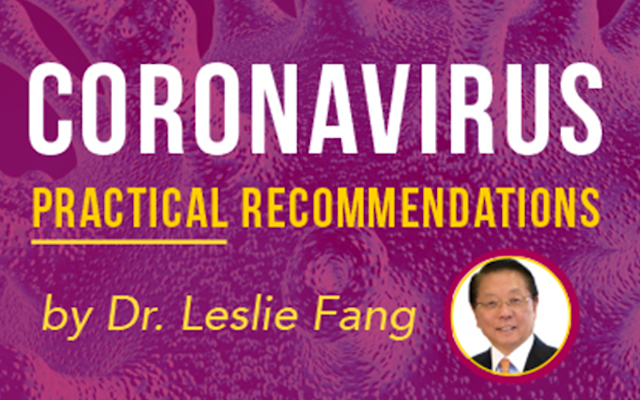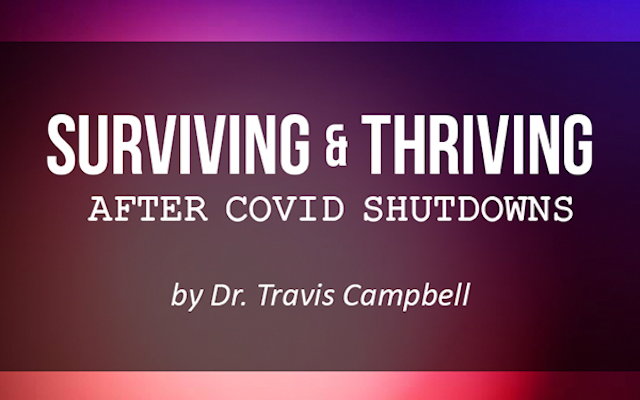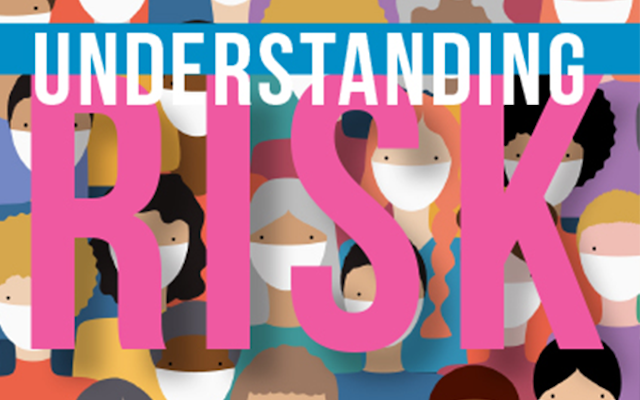As of this writing, the coronavirus situation in the United States remains in a state of rapid flux. It is clear there is community-transmission of the virus and death of affected patients in the United States, but it is also clear that aggressive steps for containment are in play in an effort to limit the scope of COVID-19.
Recommendations are therefore predicated upon information that arises daily. You should be mindful of the situation in your local community and the continuing evolution of the disease globally.
The Latest
COVID-19, the disease caused by SARS-CoV-2, is now known to be highly contagious with a rapid velocity of transmission. The disease appears to have a fatality rate that is lower than its predecessors, SARS-CoV-1 and MERS-CoV-2. Most fatalities have been elderly patients and patients with pre-existing underlying chronic diseases such as cardiovascular disease, diabetes mellitus and chronic obstructive pulmonary disease. However, there are anecdotes of young and healthy patients succumbing to the disease, heightening fear.
In 80% of cases, COVID-19, particularly in young, healthy patients, is mild. Those affected have symptoms similar to the cold or flu. In 15% of cases, development of progressive respiratory symptoms may necessitate hospitalization. In 5% of cases, patients become critically ill and require intensive care unit support. Overall fatality is estimated to be about 2%.
Although vaccines have been developed in the United States and China, it will likely take too long for the vaccines to be deployed during this epidemic because of the need for safety testing and clinical trials. Clinical trials with antiviral agents such as Remdesivir, chloroquine and others are in place and will hopefully help with development of effective therapeutic agents.
What It Means for You
Obviously, if COVID-19 does not take hold in your community, you should be able to conduct business as usual, but I still caution you to be vigilant because of the highly contagious nature of this disease and the rapid spread of the infection.
As of now, the best protection for dental professional includes a heightened sense of awareness, avoiding unnecessary contact with patients who may have coronavirus, use of appropriate personal protective equipment, and increased attention to personal hygiene.
Risk to Dental Professionals
We are aware of the risk to healthcare workers from the data coming out of Wuhan. Of the initial 44,672 cases, 3,019 (6.75%) were health workers. Seven have died as of February 11. With increasing awareness and the uniform adoption of personal protective equipment, the risk has decreased progressively in Hubei.
Dental professionals are particularly at risk when working on an infected patient because of the close contact with the patient and the risk of blood, saliva and droplet exposure.
CDC (Centers for Disease Control and Prevention) Recommendations
The CDC Recommendations are designed for all health workers. Because of the unique situation dental professionals are in, I have made modifications to tailor the recommendations.
The most important difference between medical and dental professionals in this situation is that a great deal of dentistry can be deferred to a later time, whereas medical professionals are obligated to see patients when they are sick. The modifications to the recommendations have been made to minimize the likelihood of contact with an infected patient.
MODIFIED CDC RECOMMENDATIONS FOR THE DENTAL PROFESSIONAL
The CDC has recommended attention be paid to:
Administrative controls
Engineering controls
Environmental hygiene
Correct work practices
Personal protective equipment
Strict adherence to standard, contact and airborne precautions
We have made modifications to reflect the circumstances unique to dentistry.
Administrative Controls
Prior to the Patient’s Arrival
On the day before the planned visit, have office staff call every patient on the schedule to indicate that, because of the concerns over coronavirus, they should not come in if:
They are sick with fever, cough, sore throat, muscle pain, or GI symptoms
They have had foreign travels within the past 30 days. This list will change quickly. At the time of the writing, it includes:
China, Hong Kong or Macau
South Korea
Northern Italy (or all of Italy)
Iran
Japan
This includes the airport or a flight connection
The patient should be rescheduled for a time 14 to 30 days later
Although this is an imposition on the staff and the patient, everyone will be appreciative of your concern for their welfare.
Upon Patient’s Arrival
There should be a prominent sign directing patients to use a hand sanitizer from a non-touch dispenser stand and to rigorously rub their hands for 20 seconds.
Anyone who is coughing should be given a mask and be asked to seek medical help. These patients should be rescheduled.
All patients should be given a questionnaire and queried about current illness.
The questionnaire should also inquire about travel to endemic areas within the past 30 days, including the airport or a flight connection.
Although this is an imposition on the staff and the patient, everyone will be appreciative of your concern for their welfare.
It is important to stress that even with all these precautions, an infected patient might still slip through. It is therefore even more important to take every precaution possible to protect yourself and your team.
Engineer Controls
The hope is to optimize ventilation in the operatory. Ideally, air exchange in the operatory six times an hour during opening hours minimizes issues with undue exposure.
This may not be practical in your given set of circumstances, but the ventilation system should be optimized as much as possible.
Environmental Hygiene
Because the coronavirus can live on surfaces for 24 hours+, it is important to keep all surfaces clean and sanitized. While this pertains to the waiting room, the bathroom and the front desk, it is particularly important to disinfect the operatory as frequently as is feasible.
Common cleaners such as 0.1% sodium hypochlorite, 0.5% hydrogen peroxide and 62-71% ethanol have all been shown to be effective.
Correct Work Practices
Special attention should be paid to good hand hygiene:
Good hand hygiene is the most important protection for dentists and their staff:
Thoroughly wash hands with soap and water
Lather hands with soap
Lather the back of hands, between the fingers and under the nails
Scrub hands for at least 20 seconds
Rinse off
Dry hands with a clean disposable towel or air dry
Other correct work practices include:
Attention to sharps safety
Attention to injection safety
Attention to waste disposal
Attention to sterile instruments and devices
Personal Protective Equipment
Dental Professionals and Staff
An N95 Mask/Respirator
Ordinary surgical masks have pores of about 2-10 microns while the N95 masks/respirators have pores of about 0.3 microns
The coronavirus is about 0.12 microns in diameter
Face shield protection
Goggles
Gown
Gloves
It’s also important to not touch your face. Be careful not to touch your face when taking masks and shields off.
Front Desk Staff
Front desk staff also should have N95 masks/respirators for their protection.
A barrier should be established between the patient and the front desk staff
Front desk staff should stay at least 6 feet away from symptomatic patients
Strict Precautions
Full contact and respiratory precautions should be in place including deployment of:
Gowns
Gloves
N95 mask/respirator
Goggles
Face shield
Hand hygiene
Sharps safety
Injection safety
An Evolving Situation
The recommendations outlined are subject to change as the clinical scenario evolves. However, they are certainly reasonable cornerstones to help dental professionals navigate these troubled times.
Good luck and take good care of yourself, your team and your patients.

 By: Leslie S.T. Fang, MD PhD
By: Leslie S.T. Fang, MD PhD




